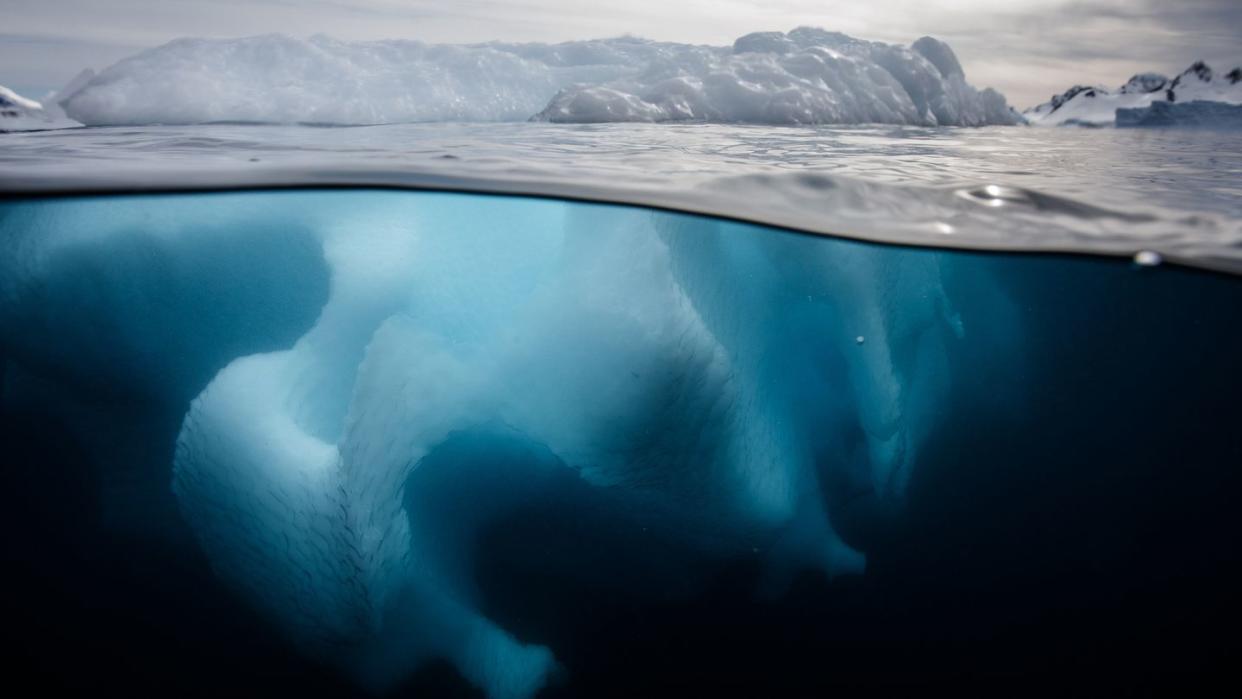Scientists Are Searching the South Pole to See if Quantum Gravity Actually Exists

"Hearst Magazines and Yahoo may earn commission or revenue on some items through these links."
If neutrinos were Diet Coke, we’d say they have “0 calories” of mass—nearly none.
Physicists studied atmospheric neutrinos as a way to start looking for quantum gravity.
The neutrinos showed no evidence of quantum gravity, but that’s just one step down the road.
Within physics, there are two enormous foundational systems—quantum mechanics and general relativity—that have been like Macs and PCs for decades. Over time, scientists on both sides have worked toward the other side, because anyone who wants to explain the entire universe has to make the two foundations work together. And, like any decent computer lab, a unifying theory has to be truly cross-platform.
In new research, researchers from the University of Copenhagen’s Niels Bohr Institute (NBI)—alongside 58 other member universities— revealed the secrets of 300,000 neutrinos they studied at the South Pole. Their paper (published in Nature Physics) is one step down a road that they hope will lead to quantum gravity. This hypothesized force, if it’s ever demonstrated in real life measurements, could be the physics dongle that adapts general relativity to quantum mechanics at last.
So, what’s Antarctica got to do with it?
Well, Antarctica is the location of the IceCube Neutrino Observatory. The facility, established by the University of Wisconsin, is a cube of ice that’s one kilometer on each edge. Scientists can observe neutrinos on the surface (IceTop) and inside the cube (DeepCore).
The neutrinos found at IceCube are from Earth’s atmosphere, which are different from the neutrinos found in outer space. “Looking at neutrinos originating from the Earth’s atmosphere has the practical advantage that they are by far more common than their siblings from outer space,” lead researcher Tom Stuttard said in a statement. Neutrinos are so tiny that scientists first believed they were massless, and they can pass through matter and leave other particles behind like a filter.
Here on Earth, they’re spun off as matter from space strikes gasses in the atmosphere, or even as particles pass through Earth itself. Then, they accumulate. “Looking at neutrinos originating from the Earth’s atmosphere has the practical advantage that they are by far more common than their siblings from outer space,” Studdard explained. And, he said, we have so little data measuring neutrinos this way that any experimental data would have value in the field.
The reason neutrinos are so valuable in the search for cross-platform physics is that they remain untouched by almost everything in the universe. A neutrino on the other end of the Milky Way will be the same when it arrives here on Earth as it was when it left its source. That’s almost unbelievable considering what the galaxy contains—from the intersecting gravities of planets and stars all the way down to the fundamental nuclear force that confines other particles.
Their implacability means that anything that affects a neutrino has a much stronger likelihood of being quantum gravity than anything we can currently understand and measure. In studying Earth’s own atmospheric neutrinos, the scientists used a key aspect called coherence to check if neutrinos were remaining unperturbed. They didn’t find any evidence of decoherence in their pool of neutrinos, meaning no perturbations took place.
“While we did have hopes of seeing changes related to quantum gravity, the fact that we didn’t see them does not exclude at all that they are real,” Studdard said in the statement. “For years, many physicists doubted whether experiments could ever hope to test quantum gravity. Our analysis shows that it is indeed possible.”
NBI founder Niels Bohr laid foundational theories about energy in the atom and what became quantum mechanics. Indeed, just about 100 years after Bohr famously debated Albert Einstein himself, he’d probably be delighted by his descendents’ progress in unifying the universe.
You Might Also Like
